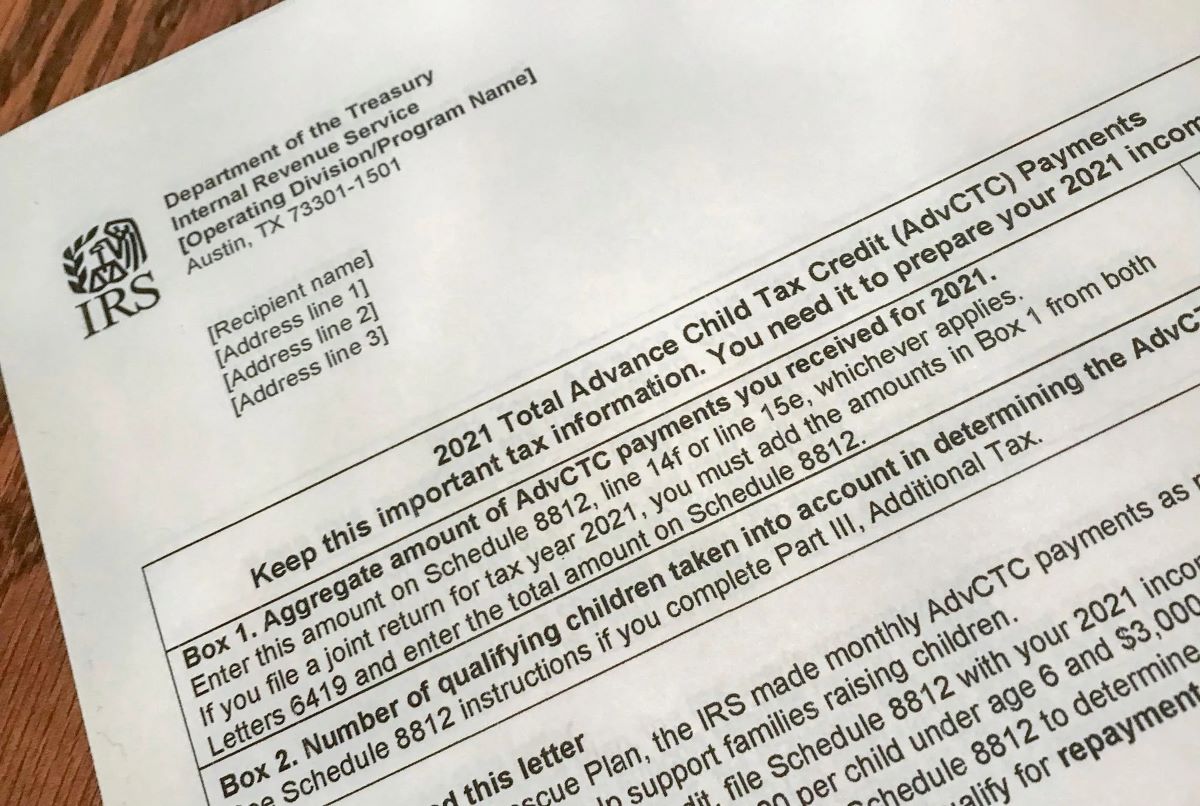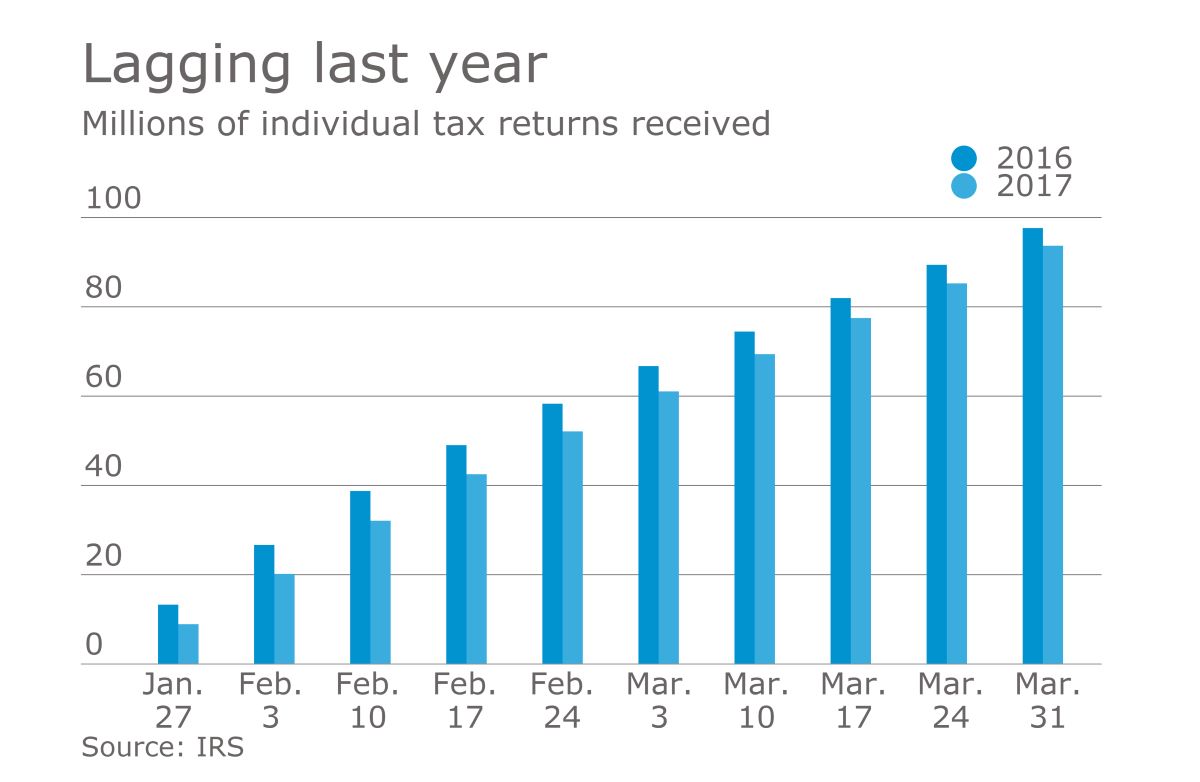

Finance
Why Does The IRS Reject Tax Return?
Published: November 1, 2023
Discover why the IRS rejects tax returns and get expert advice to improve your finances. Learn how to avoid common mistakes and maximize your tax refund.
(Many of the links in this article redirect to a specific reviewed product. Your purchase of these products through affiliate links helps to generate commission for LiveWell, at no extra cost. Learn more)
Table of Contents
Introduction
Filing taxes is an annual ritual that can cause stress and anxiety for many individuals. It’s a time when they diligently gather financial documents, crunch numbers, and hope for a smooth tax return process. However, what happens when the IRS rejects their tax return?
Receiving a rejection notice from the Internal Revenue Service (IRS) can be frustrating and confusing. Understanding why the IRS rejects tax returns is crucial to avoid common mistakes and ensure a hassle-free filing experience. In this article, we will explore some common errors that can lead to the rejection of tax returns and provide insights into how you can avoid them.
It’s important to note that the IRS rejects tax returns for various reasons. It could be due to missing or incorrect information, mathematical errors, mismatched income and deductions, filing status errors, failure to sign the return, incorrect social security number, errors on electronic filings, or suspicion of tax fraud.
By familiarizing yourself with these potential errors, you can take the necessary precautions to ensure your tax return is accepted by the IRS without any issues. Let’s delve into the details of each of these common errors and understand how to avoid them, maximizing your chances of a successful tax return.
Common Errors on Tax Returns
When it comes to filing tax returns, even minor mistakes can lead to the rejection of your submission. Understanding the common errors that occur can help you avoid them and ensure a smooth filing process. Here are some of the most frequent errors that taxpayers make on their tax returns:
- Missing or Incorrect Information: Providing incomplete or inaccurate information is a common mistake that can result in the rejection of your tax return. Be sure to double-check all personal details, such as your name, address, and social security number, and verify that you have included all necessary forms and schedules.
- Mathematical Errors: Calculation mistakes are another common error that can lead to the rejection of your tax return. Simple addition or subtraction errors can affect your final tax liability or refund amount. Always use a calculator or tax software to minimize the risk of mathematical errors.
- Mismatched Income and Deductions: Ensure that the income reported on your tax return matches the information provided by your employers, financial institutions, or other sources. Additionally, make sure that your deductions, such as mortgage interest or charitable contributions, are properly documented and supported with the required documentation.
- Incorrect Filing Status: Choosing the wrong filing status can cause your tax return to be rejected. Your filing status determines your tax rates and eligibility for certain tax benefits. Whether you are single, married filing jointly, married filing separately, head of household, or a qualifying widow(er), it’s essential to select the correct status based on your circumstances.
- Failure to Sign the Return: Forgetting to sign your tax return is a common oversight that can lead to rejection. Both you and your spouse, if applicable, must sign the return to validate it. If you are e-filing, you should use an electronic signature or PIN to ensure your return is accepted.
These are just a few examples of the common errors that can cause the IRS to reject your tax return. Being aware of these potential pitfalls and taking the necessary steps to avoid them will ensure a smooth and successful filing process. In the next sections, we will explore more errors and discuss how to rectify them.
Missing or Incorrect Information
One of the most common reasons for the rejection of tax returns is missing or incorrect information provided by taxpayers. Failing to provide complete and accurate details can lead to delays in processing your return or even the rejection of your submission. Here are some key areas to pay attention to:
- Personal Information: Make sure to provide your full name, correct Social Security Number (SSN), and current address. Any discrepancy in this information can trigger a rejection. If you recently got married or changed your name, update your records with the Social Security Administration before filing your return.
- Dependent Information: If you are claiming dependents on your tax return, ensure that you provide their accurate names, SSNs, and relationship to you. This is especially important when it comes to claiming the Child Tax Credit or Earned Income Tax Credit.
- Income Reporting: Double-check that you have reported all sources of income accurately, including wages, self-employment income, interest, dividends, and any other taxable income. Use the appropriate forms and schedules to report each type of income correctly.
- Deductions and Credits: If you are claiming deductions or tax credits, ensure that you provide all necessary supporting documentation and complete the relevant forms accurately. Examples include documentation for deductible expenses, education expenses, or medical expenses.
- Banking Information: If you are expecting a tax refund, make sure to provide correct banking information for direct deposit. Providing incorrect bank account or routing numbers can result in delays or possibly even the rejection of your refund.
To avoid errors related to missing or incorrect information, double-check all the details you provide on your tax return before submission. Take the time to review your forms and cross-reference the information with your records to ensure accuracy. Using tax software or seeking assistance from a tax professional can also help minimize the risk of errors in this area.
Remember, accuracy and attention to detail are crucial when it comes to tax returns. By providing complete and accurate information, you can minimize the chances of rejection and ensure a smooth filing process.
Mathematical Errors
One common mistake that often leads to the rejection of tax returns is mathematical errors. Even a small miscalculation can have significant consequences on your tax liability or refund amount. To avoid such errors, follow these tips:
- Use Tax Software or Calculator: Utilize tax software or an online calculator to perform calculations accurately. These tools are designed to handle complex tax calculations and can minimize the risk of mathematical errors.
- Verify Formulas and Tax Tables: When manually calculating your taxes, make sure you are using the correct tax tables and formulas. The IRS provides these resources for each tax year, and using outdated or incorrect information can lead to errors.
- Double-Check Your Math: Even when using tax software or calculators, it’s essential to double-check the calculations manually. Ensure that you have entered the correct numbers and that your addition, subtraction, multiplication, and division are accurate.
- Round Numbers Properly: When rounding numbers on your tax return, follow the IRS guidelines. In general, round numbers to the nearest dollar unless instructed otherwise.
- Include All Decimal Places: Avoid truncating decimal places when entering numbers on your tax return. Include all decimal places to maintain accuracy.
- Keep Detailed Records: Maintain thorough records of your income, deductions, and any supporting documentation. This will help you identify any potential errors and provide accurate figures on your tax return.
By taking these precautions and ensuring that your calculations are accurate, you can minimize the chances of mathematical errors on your tax return. Remember that even a small mistake can lead to a rejected return or problems with your tax liability, so it’s crucial to invest the time and effort into double-checking your math.
If you do realize that you made a mathematical error after filing your return, don’t panic. The IRS will likely catch the error during their processing, and they will contact you to resolve it. However, it’s always better to strive for accuracy from the beginning to avoid any unnecessary complications or delays.
Mismatched Income and Deductions
Another common error that can lead to the rejection of tax returns is mismatched income and deductions. It is essential to ensure that the income reported on your tax return matches the information provided by employers, financial institutions, and other sources. Additionally, make sure that your deductions are properly documented and supported. Here are some tips to avoid errors related to mismatched income and deductions:
- Review Your Documents: Carefully review all your income-related documents, such as W-2 forms, 1099 forms, and financial statements. Ensure that the reported income matches the information provided by these sources. If you find any discrepancies, contact the respective organization to get the correct information.
- Report All Sources of Income: Include all sources of income on your tax return, even if you didn’t receive a specific form for it. This includes freelance work, side jobs, rental income, and any other form of taxable income. Keep accurate records and use the appropriate IRS forms to report each type of income.
- Document Your Deductions: If you plan to claim deductions, make sure you have proper documentation to support them. This includes receipts, invoices, bank statements, medical records, and any other relevant documents. Ensure that your deductions are legitimate and adhere to the IRS guidelines.
- Be Aware of Limitations: Familiarize yourself with the IRS guidelines regarding income limitations and phase-outs for certain deductions and credits. Make sure you are eligible for the deductions you are claiming and that you have accurately calculated the available amount.
- Double-Check for Accuracy: Before submitting your tax return, review all income and deduction figures to ensure they are accurate. Check for any discrepancies or inconsistencies and correct them before filing.
By taking these steps, you can minimize the chances of mismatched income and deductions on your tax return. It’s important to ensure that the numbers reported on your return align with the information provided by relevant sources and that your deductions are substantiated with proper documentation. This helps minimize the risk of rejection and demonstrates accuracy and compliance with the tax regulations.
Remember, the IRS can cross-reference your reported income with the information they receive from employers and financial institutions. Any significant discrepancies may raise red flags and lead to further scrutiny or audits. Taking the time to accurately report your income and deductions will ensure a smoother filing process and minimize potential issues with the IRS.
Incorrect Filing Status
Choosing the correct filing status is crucial when preparing your tax return. Selecting the wrong filing status can result in errors and potentially lead to the rejection of your tax return. Here are a few important points to consider to avoid incorrect filing status:
- Understand the Different Filing Statuses: Familiarize yourself with the different filing statuses recognized by the IRS. These include Single, Married Filing Jointly, Married Filing Separately, Head of Household, and Qualifying Widow(er) with Dependent Child. Each filing status has specific criteria and can significantly impact your tax liability and eligibility for certain tax benefits.
- Evaluate Your Marital Status and Dependents: Your marital status and whether you have dependents play a crucial role in determining your filing status. If you are married, you can usually choose to file jointly with your spouse, which often provides more advantageous tax benefits. However, in some cases, filing separately may be more beneficial, so evaluate your options carefully.
- Consider Your Dependents: If you have dependents, you may qualify for the Head of Household or Qualifying Widow(er) filing status. These statuses typically offer more favorable tax rates and deductions. However, specific criteria must be met, so ensure that you qualify before choosing these filing statuses.
- Seek Professional Advice if Unsure: If you are uncertain about which filing status to choose, consider seeking advice from a tax professional. They can help analyze your situation and guide you in selecting the most appropriate filing status based on your circumstances.
- File an Amended Return if Necessary: If you realize you have chosen the incorrect filing status after submitting your tax return, you can file an amended return using Form 1040X. It’s important to rectify the mistake as soon as possible to avoid further complications.
By carefully assessing your marital status, dependents, and understanding the criteria for each filing status, you can avoid the error of selecting an incorrect filing status. Choosing the right filing status will ensure that you maximize your tax benefits and accurately report your tax liability.
Remember, selecting an incorrect filing status can result in errors and potential issues with the IRS. Take the time to understand the options available to you and make an informed decision when choosing your filing status.
Failure to Sign the Return
One common error that can lead to the rejection of your tax return is the failure to sign the return. Your signature serves as confirmation that you are submitting the return under penalty of perjury. Here are some important points to remember to ensure you don’t overlook this crucial step:
- Physical Signatures: If you are filing a paper tax return, make sure to physically sign the return. Both you and your spouse, if applicable, must sign the return in the appropriate designated areas. Failure to do so will result in the rejection of your return.
- Electronic Signatures: If you are filing electronically, you will have the option to use an electronic signature or PIN to sign your return. Depending on the software or service you use, you may be prompted to create a unique PIN or provide other identifying information in lieu of a physical signature.
- Review E-filing Instructions: If you choose to e-file your tax return, carefully review the instructions provided by the IRS or your chosen tax preparation software. They will guide you through the process of signing your return electronically and ensure that you comply with the requirements.
- Keep a Copy: Whether you file a paper return or e-file, it is crucial to keep a copy of your signed tax return for your records. This will serve as proof that you filed the return and can be useful in case of any discrepancies or future inquiries.
- Amended Returns: If you need to file an amended return, ensure that you include your signature on the amended form as well. Failure to sign an amended return could result in a rejection or delays in processing.
Remember, neglecting to sign your tax return is a common oversight that can result in the rejection or delay of your submission. It is essential to carefully review your return before submitting it to ensure that it is signed properly.
If you realize that you have forgotten to sign your tax return after submitting it, don’t panic. The IRS will likely contact you with instructions on how to rectify the situation. However, to avoid any unnecessary complications or delays, it’s best to ensure your return is signed correctly from the beginning.
Incorrect Social Security Number
Providing an incorrect Social Security Number (SSN) is a common error that can lead to the rejection of your tax return. Your SSN is a unique identifier that the IRS uses to process your tax return and match it with your income information. Here are some important points to keep in mind to avoid this error:
- Double-Check Your SSN: Before submitting your tax return, double-check that you have entered your SSN correctly. Even a small typo or transposition of numbers can result in a rejected return or processing delays.
- Ensure Dependents Have Correct SSNs: If you are claiming dependents on your tax return, ensure that you provide their correct SSNs. Dependents must have valid SSNs for you to claim tax benefits on their behalf.
- Update Your Information with the SSA: If you recently obtained a new SSN or changed your name, make sure to update your information with the Social Security Administration (SSA) before filing your tax return. This will help ensure that your tax return is processed accurately.
- Include Spouse’s SSN: If you are married and filing jointly, include your spouse’s correct SSN on the tax return. Both you and your spouse must have valid SSNs to file jointly.
- Review Prior Year’s Return: If you are using tax software or referencing a prior year’s return, carefully review the SSNs you previously provided to ensure you are using the correct numbers.
Providing an incorrect SSN can have serious implications. The IRS may not be able to match your tax return with the income reported by your employer or financial institutions, which can result in processing delays or further inquiries from the IRS.
If you realize that you have entered an incorrect SSN after filing your tax return, it is important to take action. Contact the IRS to notify them of the mistake and follow their instructions to correct it. Ignoring the error will only lead to potential complications and delays in processing your return.
By double-checking your SSN and ensuring that it is accurate on your tax return, you can minimize the risk of rejection and help ensure a seamless filing process.
Errors on the Electronic Filing
Electronic filing has become increasingly popular due to its convenience and speed. However, errors can still occur during the electronic filing process, leading to the rejection of your tax return. Here are some common errors on electronic filings to be aware of and tips to avoid them:
- Incorrect or Incomplete Data Entry: One of the most common errors in electronic filing is entering incorrect or incomplete information. Take your time to carefully enter all required data, including personal information, income, and deductions. Double-check the information before submitting to ensure accuracy.
- Using Outdated Software: Ensure that you are using the latest version of tax software or online filing services. Outdated software may not have the most up-to-date tax forms or calculations, leading to errors or rejected returns.
- Failing to Sign Electronically: When e-filing, you must electronically sign your tax return by using an electronic signature or Personal Identification Number (PIN). Failure to sign your return will result in rejection. Follow the specific instructions provided by the e-filing service to complete this step correctly.
- Inaccurate Bank Account Information: If you are expecting a tax refund and choose direct deposit, ensure that you provide the correct bank account and routing numbers. Any discrepancies or errors can result in delayed or rejected refunds.
- Filing Under Multiple Accounts: If you have multiple accounts with an e-filing service, make sure you choose the correct account when submitting your tax return. Filing under the wrong account can lead to confusion and potential rejection.
- Failure to Retain a Copy: After successfully e-filing your tax return, make sure to keep a copy of the filed return for your records. This includes all supporting documentation and any confirmation of e-filing submission.
To minimize errors on electronic filings, it is crucial to double-check all information before submitting your tax return. Take advantage of the error-checking features provided by tax software or online filing services to identify potential issues or mistakes. Additionally, keep any supporting documentation organized and easily accessible in case of inquiries or audits.
If your electronic tax return is rejected due to errors, carefully review the error message or notification provided by the IRS or the e-filing service. Take the necessary steps to correct the errors and refile your return promptly. Pay close attention to any specific instructions or documentation required to resolve the issues.
By being meticulous and attentive during the electronic filing process, you can minimize errors, increase the chances of a successful submission, and enjoy the benefits of a faster tax return processing time.
Suspicion of Tax Fraud
Suspicion of tax fraud is a serious matter that can lead to the rejection and investigation of your tax return. The IRS has sophisticated systems in place to identify potential fraudulent activities. To avoid any suspicion of tax fraud, it’s important to be aware of certain practices and take steps to ensure compliance:
- Accurate Reporting: Ensure that all information, including income, deductions, and credits, is reported accurately on your tax return. Deliberately providing false or misleading information can trigger suspicions of tax fraud.
- Proper Documentation: Maintain proper documentation for all income, deductions, credits, and any other items on your tax return. Having supporting documents readily available ensures you can substantiate the figures reported and prevent any suspicion of fraudulent activity.
- Avoiding Underreporting: Underreporting income is a common form of tax fraud. Ensure that all income from all sources, including wages, self-employment income, rental income, and investment income, is accurately reported on your tax return.
- Be Mindful of Tax Shelter Schemes: Participating in abusive tax shelters or schemes with the intent to evade taxes can lead to serious consequences. Be cautious of any arrangements that promise to eliminate or significantly reduce your tax liability. Consult with a trusted tax professional if you have concerns or questions about certain tax strategies.
- Report Offshore Accounts: If you have any offshore bank accounts or assets, make sure to comply with all reporting requirements, such as filing a Report of Foreign Bank and Financial Accounts (FBAR) or disclosing them on the appropriate tax forms. Failure to report offshore accounts can result in severe penalties and suspicion of tax evasion.
- Seek Professional Advice if Unsure: If you have complex financial situations or are unsure about certain aspects of your tax return, seek advice from a qualified tax professional. They can ensure that you are in compliance with tax laws and help mitigate any suspicion of tax fraud.
It is important to note that being subject to suspicion of tax fraud does not automatically mean you have committed any wrongdoing. The IRS has various methods for identifying potential fraud, such as data matching and statistical analysis. If you are contacted by the IRS regarding a suspicion of tax fraud, cooperate fully and provide any requested information or documentation.
By being diligent, accurate, and honest in your tax reporting, you can avoid any suspicion of tax fraud and ensure compliance with tax laws. Taking the necessary steps to maintain accurate records and seek professional advice when needed will help protect you from unintentional mistakes and potential fraudulent activities.
Conclusion
Filing your tax return accurately and avoiding common errors is essential to ensure a smooth and successful filing process. By understanding the common errors that can lead to the rejection of your tax return, you can take proactive steps to minimize the risk of encountering such issues. Whether it is missing or incorrect information, mathematical errors, mismatched income and deductions, incorrect filing status, failure to sign the return, incorrect Social Security Number, errors on electronic filings, or suspicion of tax fraud, being aware of these potential pitfalls can help you avoid them.
Double-checking your personal information, ensuring accurate calculations, providing complete and valid documentation, and selecting the correct filing status are all crucial components of a successful tax return. Additionally, embracing electronic filing technologies and promptly addressing any errors or discrepancies can further streamline the process.
If your tax return is rejected for any reason, remain calm and take immediate action to rectify the issue. Review the rejection notice carefully, correct the error, and resubmit your return as soon as possible. Remember, timely action can help you avoid any penalties or unnecessary delays in receiving your tax refund.
Lastly, if you are ever in doubt about any aspect of your tax return, seek advice from a qualified tax professional. They can provide guidance tailored to your unique situation and ensure that you navigate the tax filing process without any hiccups.
By being thorough, accurate, and diligent, you can increase the chances of a successful tax return. Take the time to review the instructions, maintain proper documentation, and utilize available resources to minimize errors. By doing so, you can smoothly navigate the tax filing process and have peace of mind knowing that your return has been processed successfully by the IRS.














